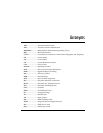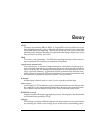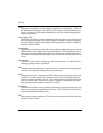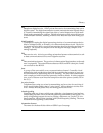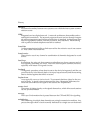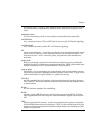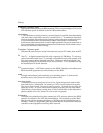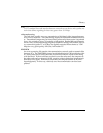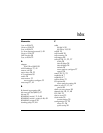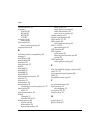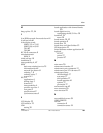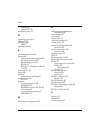
Glossary
61202.086L1-1 ISU 512 User Manual 103
by multiple users. Typically, user data streams are interleaved on a bit or byte ba-
sis (time division) or separated by different carrier frequencies (frequency divi-
sion).
multipoint circuit
A circuit consisting of three or more stations connected directly electrically.
non-ISDN line
Any connection from a CPE to a SPCS that is not served by D-Channel signaling.
non-ISDN trunk
Any trunk not served by either SS7 or D-Channel signaling.
NT1
Network termination 1. A unit that provides physical and electromagnetic termi-
nation of the U-interface 2-wire transmission line, converts between Layer 1 for-
mats used at the U- and T- reference points, and performs some maintenance
functions.
packet mode
Refers to switching of packets of information for different users by statistically
multiplexing them over the same transmission facilities. ISDN packet mode capa-
bilities are based on CCITT recommendation X.25 procedures.
point-to-point
Describing a circuit connecting two points directly with no intermediate process-
ing nodes or computers (although switching facilities could exists). A type of con-
nection that links two logical entities (i.e., phone-line circuit).
EIA-232-C
An EIA-specified physical interface with associated electrical signaling between
DCE and DTE. The most commonly employed interface between computer devic-
es and modems.
RS-366
An EIA interface standard for autodialing.
RS-530
Interface using a DB-25 connector, but for higher speeds than RS-232. Has bal-
anced signals (like EIA-422) except for three maintenance signals which are EIA-
423.
SDLC
Synchronous data link control. A data communications line protocol associated
with the IBM system network architecture. SDLC is a bit-oriented protocol (not a
character-oriented protocol) that includes multiple block error checking and full
duplex line operation.





